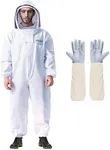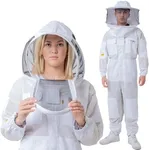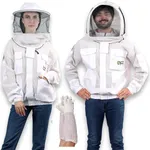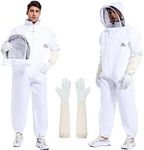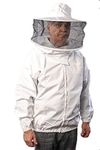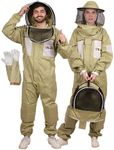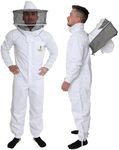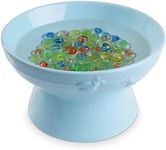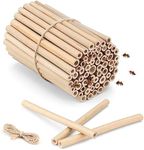Buying Guide for the Best Bee Suits
Choosing the right bee suit is crucial for ensuring your safety and comfort while working with bees. A good bee suit will protect you from stings, allow you to move freely, and keep you cool during long hours of beekeeping. When selecting a bee suit, consider the material, fit, ventilation, and additional features that can enhance your beekeeping experience. Understanding these key specifications will help you make an informed decision and find the best suit for your needs.MaterialThe material of a bee suit is important because it determines the level of protection and comfort. Common materials include cotton, polyester, and a blend of both. Cotton is breathable and comfortable but can be heavier and less durable. Polyester is lightweight and durable but may not be as breathable. A blend of cotton and polyester offers a balance of comfort, breathability, and durability. Choose a material based on your climate and how long you plan to wear the suit. If you work in a hot climate, a more breathable material like cotton or a cotton blend may be preferable.
FitThe fit of a bee suit is crucial for both protection and comfort. A suit that is too tight can restrict movement and make it easier for bees to sting through the fabric, while a suit that is too loose can be cumbersome and may have gaps where bees can enter. Look for a suit that fits comfortably but allows for a full range of motion. Some suits come with adjustable features like elastic cuffs and waistbands to ensure a snug fit. Consider your body measurements and try on different sizes if possible to find the best fit for you.
VentilationVentilation is important to keep you cool and comfortable, especially during hot weather. Some bee suits come with built-in ventilation panels made of mesh or other breathable materials. These panels are usually located in areas where heat tends to build up, such as the back, underarms, and legs. If you live in a hot climate or plan to spend long hours in your bee suit, look for one with good ventilation to prevent overheating and discomfort. However, ensure that the ventilation panels are designed to keep bees out while allowing air to flow.
VeilThe veil is a critical component of a bee suit as it protects your face and neck from stings. There are different types of veils, including round veils, fencing veils, and hooded veils. Round veils offer good visibility and ventilation but can be bulky. Fencing veils are more streamlined and provide a closer fit, but may have less ventilation. Hooded veils offer full coverage and are easy to put on and take off. Choose a veil that provides clear visibility, good ventilation, and secure protection. Consider your personal preference and the type of beekeeping tasks you will be performing.
DurabilityDurability is important to ensure that your bee suit lasts through multiple seasons of beekeeping. Look for suits made with high-quality materials and reinforced stitching in high-stress areas. Some suits come with additional features like reinforced knees and elbows for added durability. If you plan to use your bee suit frequently or in rough conditions, investing in a more durable suit can save you money in the long run. Consider how often you will be using the suit and the type of activities you will be doing to determine the level of durability you need.
Ease of CleaningBee suits can get dirty quickly, so ease of cleaning is an important factor to consider. Some suits are machine washable, while others may require hand washing or special care. Look for suits with removable veils and other components that can be easily cleaned separately. Consider how much time and effort you are willing to spend on cleaning your suit. If you prefer low-maintenance options, choose a suit that is easy to wash and dry. Regular cleaning will help maintain the suit's effectiveness and longevity.
